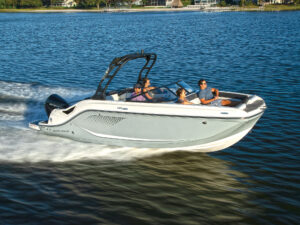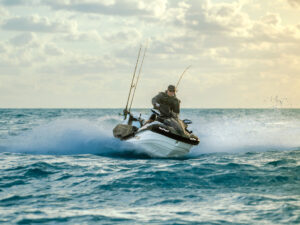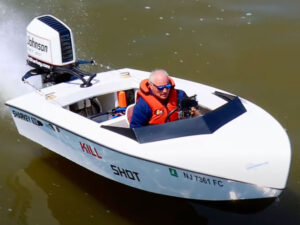DIY is an important part of Boating magazine’s DNA. For many readers, working aboard is as much of the overall experience as getting out on the water. Even for readers who seldom get dirtier than ink on their sleeve while writing the check, it’s nice to know what those hard-earned dollars actually go toward.
Check out other Electric Whaler 2025 Blog Posts!
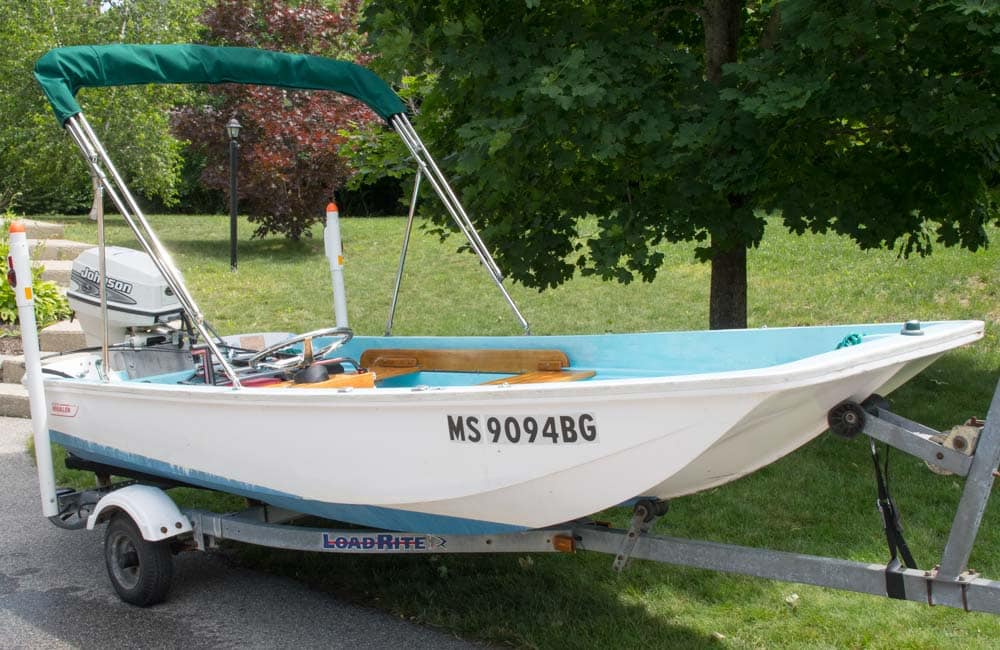
There is one thing I’ve learned through dozens of DIY articles, though — there is no substitute for actually doing the project. Hypothetical installation or maintenance articles miss important, often overlooked details.
Going hands-on also provides me a deeper understanding of the nuts and bolts of the project. Sometimes those details are stated within the article, but often it’s background information that informs my writing and photography.
This Boston Whaler offers a perfect boat for projects — small enough to make things simple, on an open boat where everything is readily visible to camera lenses, but also detailed enough to give a true representation of the entire project. And these projects should scale up to a larger boat.
My initial efforts make the gas boat more user friendly — trailer guide tubes with Pipe-Light trailer lighting, plus a new wiring harness on my 10-year-old Load Rite trailer, for instance. To keep the sun and rain at bay, I’ll install a DIY Bimini top kit from Taylor Made Products.
Other projects will highlight some common problem — like how to mount hardware in cored fiberglass construction. I’ll demonstrate, using West System epoxy, how to mount swim ladder brackets in the Boston Whaler’s thin-skinned foam-cored fiberglass gunwale.
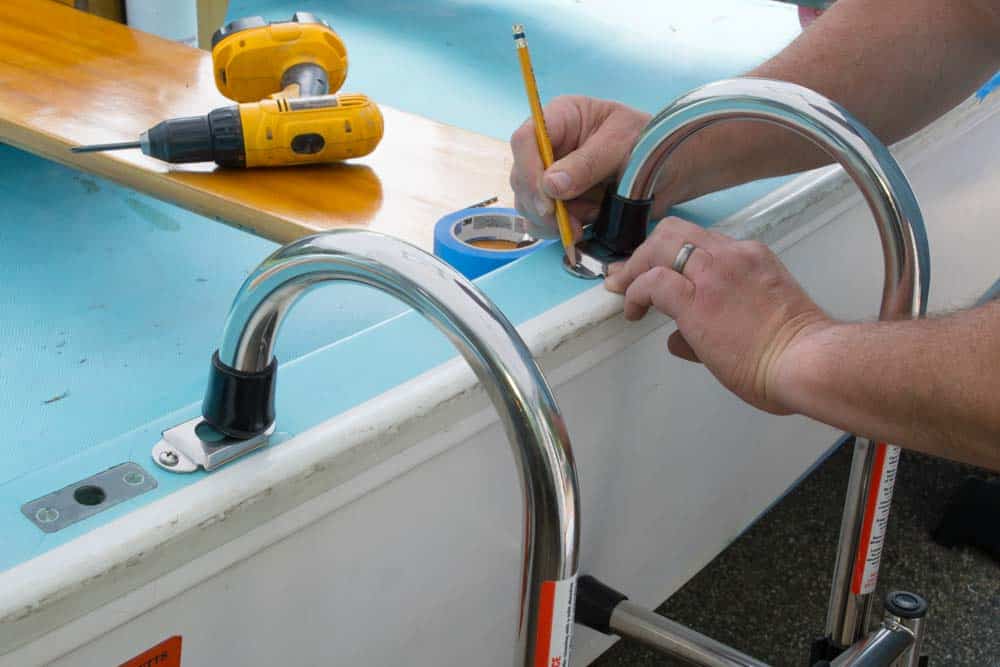
A third set of projects will look toward the future of boating. Electric propulsion for planing powerboats will be at high voltage — 96 volts DC or more. With the help from engineers at Mastervolt and Blue Sea Systems, I’ll build a separate 12-volt lithium-powered house electrical system typical of what we’ll likely see when high-voltage DC battery power is used to turn propellers.
That electrical system will include powering a CMC electric trim unit for the Elco electric motor, conversion to low-consumption LED lighting, and even a look at what energy-efficient sound systems might look like when turning up the tunes takes battery power that won’t be replaces by gas-powered alternators.
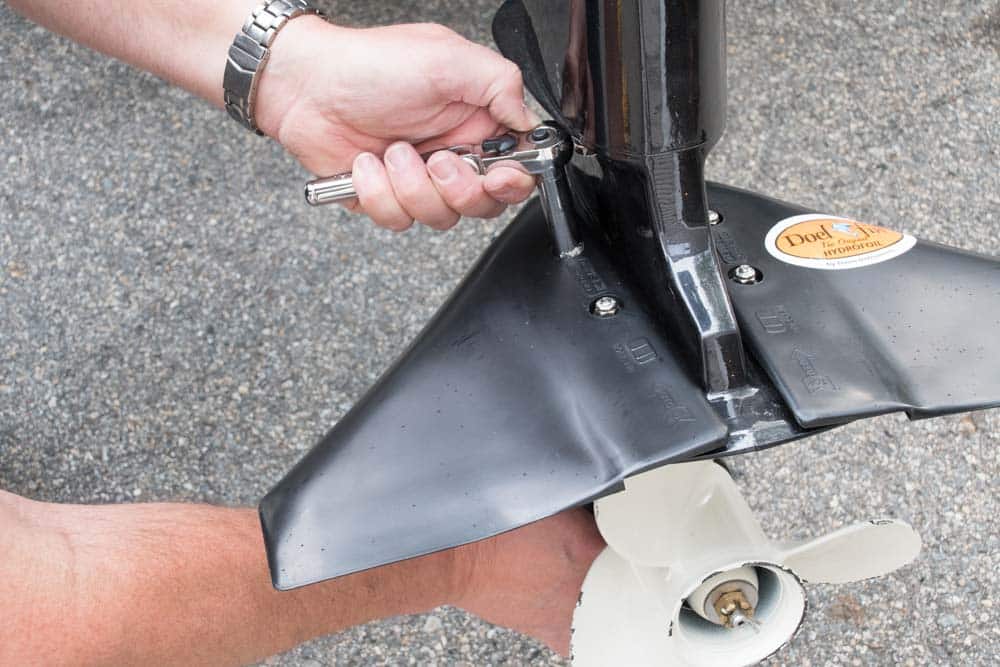
A Doel-Fin hydrofoil should improve trim and handling. And while it’s admittedly a little overboard for a 13-foot Boston Whaler, I’ll squeeze all the miles I can from batteries by stripping heavy, rough layers of bottom paint and repainting with Pettit Black Widow, then burnishing that paint to an ultra-smooth finish. (This isn’t as ridiculous as it seems — the tri-hull 13 Whaler carries more drag-inducing wetted surface while on plane than similar V-hull or catamaran boats.)
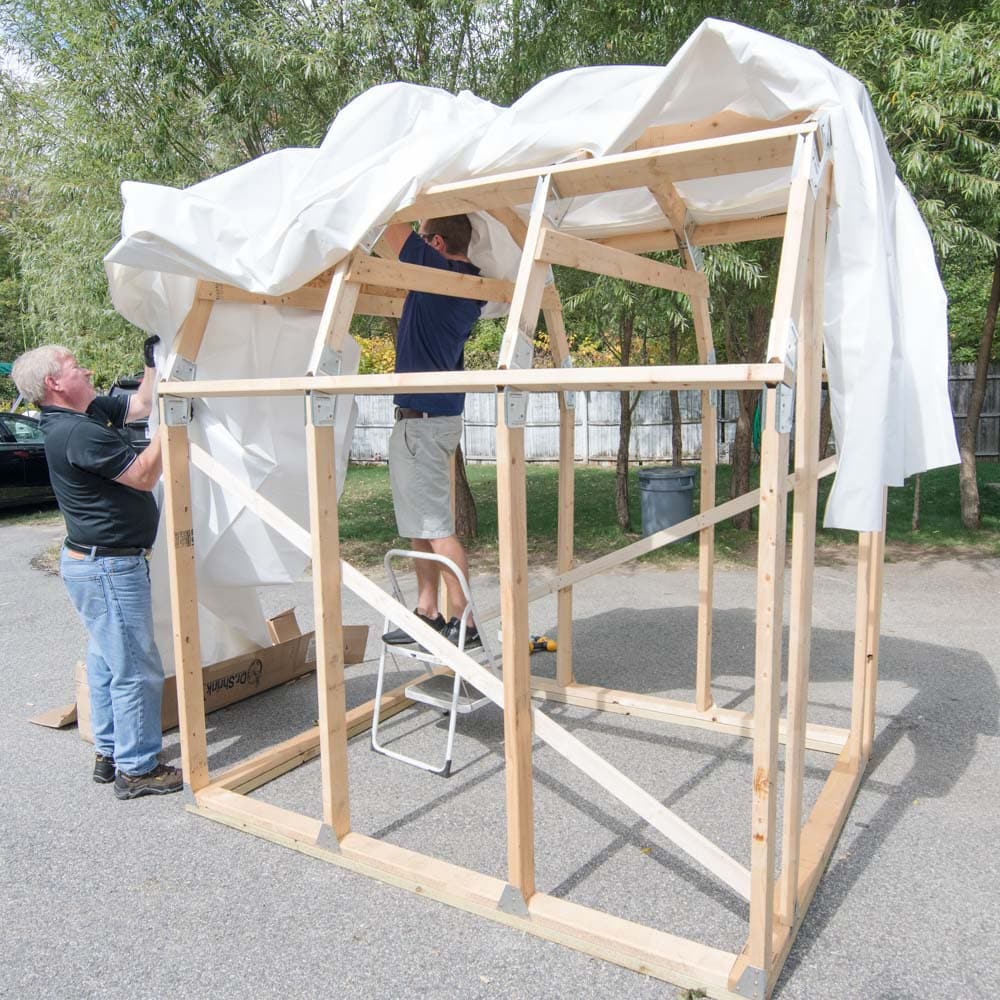
I’ll also do what I can to rejuvenate my 1970 Boston Whaler, starting with a coat of Quantum paint inside and out, partly rolled and tipped and partly sprayed with 3M’s new DIY-friendly Accuspray painting system. The irreplaceable Honduran mahogany interior woodwork will get a combination of high-tech Pettit varnish and an ultra-durable Quantum paints clear coat, to cut down on maintenance. (Philippine mahogany is pretty, but it isn’t traditional mahogany.)
And I’ll even build a temporary work shelter to keep the boat out of the weather during projects.

Capt. Vincent Daniello is a regular contributor to Boating. Capt. Daniello is a United States Coast Guard Licensed Master Upon Any Ocean for Vessels up to 500 Tons. He is an IGFA Certified Fishing Tournament Observer. He is a professional photographer and videographer. You can learn more about Capt. Daniello at bluewateradv.com.

